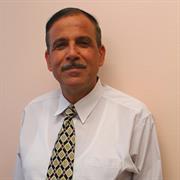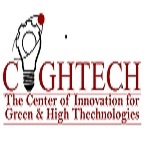Theme: Latest Advancements in Energy Evolution for Sustainable Future
Renewable Energy-2023
It is our pleasure to invite all scientists, academicians, young researchers, business delegates and students from all over the world to attend the 5th World Summit on Renewable Energy and Resources will be held in Frankfrut, Germany during March 13-14,2023.
RENEWABLE ENERGY- 2023 Conference provides a platform of international standards where you can discuss and share persuasive key advances in Renewable and Sustainable Energy. In addition to Presentations, Workshops, and Discussions, the conference also offers a unique venue for renewing professional relationships, networking and for remaining up-to-date variations in our challenging and expanding discipline.
RENEWABLE ENERGY- 2023 we have not only increased the number of opportunities for you to network with colleagues from across the world but also introduced more focused sessions that will feature cutting edge presentations, special panel discussions, and livelier interaction with industry leaders and experts. We’re looking forward to an excellent meeting with scientists from different countries around the world and sharing new and exciting results in Renewable and Sustainable energy.
Renewable energy is energy derived from natural sources that are replenished at a higher rate than they are consumed. Sunlight and wind, for example, are such sources that are constantly being replenished. Renewable energy sources are plentiful and all around us.Fossil fuels - coal, oil and gas - on the other hand, are non-renewable resources that take hundreds of millions of years to form. Fossil fuels, when burned to produce energy, cause harmful greenhouse gas emissions, such as carbon dioxide.
- Clean and Renewable Energy
- Renewable Energy Utilizations
- Solar Energy and Photovoltaic Systems
- Wind Energy Systems
- Energy-Saving Technology
- New Energy Applications
- Hybrid energy systems
- Financing on Renewable Energy
Track 2: Solar and Wind Energy
Solarenergy, radiation from the Sun capable of producing heat, causing chemical reactions, or generating electricity. The total amount of solar energy incident on Earth is vastly in excess of the world’s current and anticipated energy requirements. If suitably harnessed, this highly diffused source has the potential to satisfy all future energy needs. In the 21st century solar energy is expected to become increasingly attractive as a renewable energy source because of its inexhaustible supply and its nonpolluting character, in stark contrast to the finite fossil fuels coal, petroleum, and natural gas.
Wind is used to produce electricity using the kinetic energy created by air in motion. This is transformed into electrical energy using wind turbines or wind energy conversion systems. Wind first hits a turbine’s blades, causing them to rotate and turn the turbine connected to them. That changes the kinetic energy to rotational energy, by moving a shaft which is connected to a generator, and thereby producing electrical energy through electromagnetism.
Track 3: Advanced Materials for Energy Storage
Energy Storage is the catch of endurance created at one time for use at a later time. A gadget that stores intensity is here and there called a gatherer. Energy comes in assorted structures including radiation, compound, gravitational potential, electrical potential, power, raised temperature, comatose warmth and dynamic. Energy Storage combines changing over vitality from frames that are hard to store to all the more usefully or financially storable structures. Mass Energy stockpiling is right now ruled by hydroelectric dams, both customary and also pumped. The vitality isn't put away accurately; however, the work-result of consume Energy (pumping ceaselessly warm) is put away, having the equitable impact on daytime utilization
Track 4: Nano Environmental Technologies
Use of nanotechnology which includes the control of materials at the size of the nanometer to green designing standards is "Green nanotechnology". It likewise alludes to the utilization of the results of nanotechnology to upgrade manageability. Keeping up and enhancing soil, water, and air quality speak to the absolute most imposing difficulties confronting worldwide society in the 21st century. Contaminations from such assorted sources as oil and synthetic spills, pesticide and compost overflow, surrendered modern and mining locales and airborne vaporous and particulate issue from cars worsen the circumstance once a day. Identifying and treating existing contaminants and counteracting new contamination are among the difficulties. Utilization of Nano-materials in assorted fields, for example, upgrading the creation and refining of energies and decrease of discharges from cars, vitality stockpiling (batteries and Nano-empowered fuel cells), to give safe drinking water through enhanced water treatment, desalination, Nano-empowered protection and outline of Nano-materials for contamination detecting and location.
- Nanotechnology in Energy Systems
- Green Nanotechnology
- Nanomaterials for Hydrogen, Fuel Cells & Thermal Energy
- Nanomaterials for Energy Conversion & Storage
- Treatment & Remediation
- Nanotechnology for Sustainable Energy Production
Geothermal heat pumps can tap into this resource to heat and cool buildings. A geothermal heat pump system consists of a heat pump, an air delivery system (ductwork), and a heat exchanger-a system of pipes buried in the shallow ground near the building. In the winter, the heat pump removes heat from the heat exchanger and pumps it into the indoor air delivery system. In the summer, the process is reversed, and the heat pump moves heat from the indoor air into the heat exchanger. The heat removed from the indoor air during the summer can also be used to provide a free source of hot water. Many technologies have been developed to take advantage of geothermal energy - the heat from the earth.
- Geothermal Heat Pumps
- Geothermal Electricity Production
- Geothermal Direct Use
Track 6: Bioenergy/Biofuel Energy
Bioenergy use falls into two main categories: “traditional” and “modern”. Traditional use refers to the combustion of biomass in such forms as wood, animal waste and traditional charcoal. Modern bioenergy technologies include liquid biofuels produced from bagasse and other plants; bio-refineries; biogas produced through anaerobic digestion of residues; wood pellet heating systems; and other technologies.About three-quarters of the world’s renewable energy use involves bioenergy, with more than half of that consisting of traditional biomass use. Bioenergy accounted for about 10% of total final energy consumption and 1.9% of global power generation in 2015.
Hydropower, or hydroelectric power, is one of the oldest and largest sources of renewable energy, which uses the natural flow of moving water to generate electricity. Hydropower currently accounts for 31.5% of total U.S. renewable electricity generation and about 6.3% of total U.S. electricity generation.While most people might associate the energy source with the Hoover Dam—a huge facility harnessing the power of an entire river behind its wall—hydropower facilities come in all sizes. Some may be very large, but they can be tiny, too, taking advantage of water flows in municipal water facilities or irrigation ditches.
Track 8: Ocean and Marine Energy
Marine energy, also known as marine and hydrokinetic energy or marine renewable energy, is a renewable power source that is harnessed from the natural movement of water, including waves, tides, and river and ocean currents. Marine energy can also be harnessed from temperature differences in water through a process known as ocean thermal energy conversion.
The opportunities to harness marine energy are abundant. The total available marine energy resource in the United States is equivalent to approximately 57% of all U.S. power generation in 2019. Even if only a small portion of this technical resource potential is captured, marine energy technologies would make significant contributions to the nation’s energy needs.
A photovoltaic (PV) cell, commonly called a solar cell, is a nonmechanical device that converts sunlight directly into electricity. Some PV cells can convert artificial light into electricity. Sunlight is composed of photons, or particles of solar energy. These photons contain varying amounts of energy that correspond to the different wavelengths of the solar spectrum.A PV cell is made of semiconductor material. When photons strike a PV cell, they may reflect off the cell, pass through the cell, or be absorbed by the semiconductor material. Only the absorbed photons provide energy to generate electricity.
Track 10: Hybrid Renewable Energy Sources
According to many renewable energy experts, a small "hybrid" electric system that combines home wind electric and home solar electric (photovoltaic or PV) technologies offers several advantages over either single system.In much of the United States, wind speeds are low in the summer when the sun shines brightest and longest. The wind is strong in the winter when less sunlight is available. Because the peak operating times for wind and solar systems occur at different times of the day and year, hybrid systems are more likely to produce power when you need it.
A Smart Grid may be a holistic resolution that employs a broad vary of knowledge technology resources, permitting existing and new gridlines to cut back electricity waste and energy prices. Smart grids are going to be an essential foundation for the incorporation of renewable energy into the electrical grid. Since renewable sources like star and wind square measure variable, it'll be essential to possess a demand-responsive electrical grid that uses energy expeditiously. Smart grid technologies have myriad applications and permutations, together with sensible meters in individual homes to the power to access variable and distributed sources of energy based mostly upon demand and availableness. Sensible meters empower electricity shoppers to use energy supported value signals given as rates fluctuate.
- Smart Grids Modeling
- Smart Grid Networks, Reliability & Recovery
- Smart Sensors & Advanced Metering Infrastructure
- Impact of Smart Grid on Energy Resources
- Smart Grids Technologies
- Smart Grids Applications & Challenges
- Smart Grid Deployment & Demonstration Projects
Track 12: Power and Energy Engineering
Power Engineering is a subfield of Energy Engineering and Electrical Engineering that arrangements with the generation, transmission, dispersion and usage of electric force and the electrical gadgets associated with such frameworks including generators, engines and transformers. However a great part of the field is worried with the issues of three-phase AC power – the standard for generous scale power generation, transmission and dissemination over the cutting edge world – a noteworthy division of the field is worried with the change between AC and DC power and the improvement of particular power systems for example, those utilized in aircraft or for electric railway networks. The Power Systems were getting more productive with taking a break and have turned into a centre region of Electrical Engineering field.
- Energy Transmission and Distribution
- Electricity Networks of the Future
- Energy Storage Technologies & Devices
- Power & Energy Generation
Track 13: Environmental Impact Assessment
Environmental Impact Assessment (EIA) is the way toward looking at the foreseen ecological impacts of a proposed extend - from thought of natural viewpoints at configuration organize, through conference and planning of an Environmental Impact Assessment Report (EIAR), assessment of the EIAR by a skillful expert, the consequent choice with reference to whether the venture ought to be allowed to continue, enveloping open reaction to that choice. Environmental Impact Assessment (EIA) is an important management tool for ensuring optimal use of natural resources for sustainable development. A beginning in this direction was made in our country with the impact assessment of many projects.
- EIA Directive
- The Role of EIA in Decision Making Process
- Social Impact Assessment
- Procedures & Evaluation Methods
- Environmental Justice Challenges of Climate Change
Track 14: Small and Micro Scale hydropower
Micro, mini and small hydro – What is the difference? The size designations for hydropower plants are a little misleading because, for example, a ‘mini’ hydro system could actually produce enough electricity for a thousand ‘average’ UK homes, which by most people’s standards is quite large! This anomaly in terminology has come about because hydropower really developed as a major large-scale energy producer so the designations were relative to very large ‘Gigawatt scale’ hydropower. There also isn’t a worldwide agreed definition, but the table below shows the most widely accepted categories. The table also shows the number of ‘average’ UK homes electrical energy needs met to put things in context.
Track 15: Solar Thermal Energy
Solar thermal energy When a dark surface is placed in sunshine, it absorbs solar energy and heats up. A solar thermal collector working on this principle consists of a sun facing surface which transfers part of the energy to a working fluid such as water or air. To reduce heat losses to the atmosphere and to improve its efficiency, one or two sheets of glass are usually placed over the absorber surface and insulation is placed behind the absorber. This simple solar thermal collector is called a flat plate collector, which can achieve temperatures up to about 100°C. To achieve higher temperatures, concentrating collectors, such as, parabolic trough, parabolic dish or a central receiver tower are used.
Track 16: Green Energy and Economy
Green energy mainly involves natural energetic processes which will be controlled with very little pollution. Anaerobic digestion, geothermic power, wind power, small-scale hydropower, solar power, biomass power, periodic event power, wave power, and a few styles of atomic power belongs to the green energy. Green economy can be defined as an economy that aims at reducing environmental risks and ecological scarcities, which aims for property development while not degrading the atmosphere in keeping with the United Nations setting Programme. It firmly associated with environmental monetary science, however contains a great deal of politically connected core interest. A green economy is thought of together that is low carbon, asset conservative and socially far reaching. It firmly associated with biological monetary science, however contains a considerable measure of politically connected core interest.
- Green Economy Sector
- Modeling Cyber-physical Smart Grids & Demand Response Management
- Energy Storage, Fuel Cell Technologies & Trends
- Electrical Vehicles, Grid to Vehicle (G2V) & Vehicle to Grid (V2G)
- Secure & Advanced Metering Infrastructure
- Solar Power Systems, Energy Management & Sustainability
Climate change is the single biggest health threat facing humanity, and health professionals worldwide are already responding to the health harms caused by this unfolding crisis. The Intergovernmental Panel on Climate Change (IPCC) has concluded that to avert catastrophic health impacts and prevent millions of climate change-related deaths, the world must limit temperature rise to 1.5°C. Past emissions have already made a certain level of global temperature rise and other changes to the climate inevitable. Global heating of even 1.5°C is not considered safe, however; every additional tenth of a degree of warming will take a serious toll on people’s lives and health.Global climate change is not a future problem. Changes to Earth’s climate driven by increased human emissions of heat-trapping greenhouse gases are already having widespread effects on the environment: glaciers and ice sheets are shrinking, river and lake ice is breaking up earlier, plant and animal geographic ranges are shifting, and plants and trees are blooming sooner.Effects that scientists had long predicted would result from global climate change are now occurring, such as sea ice loss, accelerated sea level rise, and longer, more intense heat waves.
Biomass is renewable organic material that comes from plants and animals. Biomass was the largest source of total annual U.S. energy consumption until the mid-1800s. Biomass continues to be an important fuel in many countries, especially for cooking and heating in developing countries. The use of biomass fuels for transportation and for electricity generation is increasing in many developed countries as a means of avoiding carbon dioxide emissions from fossil fuel use. In 2021, biomass provided nearly 5 quadrillion British thermal units (Btu) and about 5% of total primary energy use in the United States.Biomass contains stored chemical energy from the sun. Plants produce biomass through photosynthesis. Biomass can be burned directly for heat or converted to renewable liquid and gaseous fuels through various processes.
Track 19: Photovoltalic Technology
A single PV device is known as a cell. An individual PV cell is usually small, typically producing about 1 or 2 watts of power. These cells are made of different semiconductor materials and are often less than the thickness of four human hairs. In order to withstand the outdoors for many years, cells are sandwiched between protective materials in a combination of glass and/or plastics.
To boost the power output of PV cells, they are connected together in chains to form larger units known as modules or panels. Modules can be used individually, or several can be connected to form arrays. One or more arrays is then connected to the electrical grid as part of a complete PV system. Because of this modular structure, PV systems can be built to meet almost any electric power need, small or large.
The global renewable energy is expected to $1,977.6 billion by 2030, growing at a CAGR of 8.4% from 2021 to 2030. renewable energy is a field of environmental that deals with the Climate Change, Global Warming. Region/country wise renewable Energy is available at Renewable Energy-2023.
Renewable energy, even referred as clean energy, is usually derived from natural sources that are constantly replenished. Wind energy, a type of renewable energy, is used to generate electric energy from kinetic energy source. Wind turbine converts the wind energy into mechanical energy, which is further converted into electrical energy through generator. Wind energy can be generated offshore and onshore. Onshore wind energy is associated with onshore turbines that are located on land, whereas offshore wind turbines are found in ocean or sea.
Renewable energy is relatively more expensive than fossil fuel. Several factors are responsible to drive the usage of renewable energies, the most crucial being the attribution of global warming due to carbon dioxide (CO2) emission from the combustion of fossil fuels. The concern about the reduction of greenhouse gas emissions, increase in search for energy security along with the aversion to traditional nuclear power, and lack of progression in the application of the nuclear power are expected to drive the demand for geothermal power market during the forecast period. Governments of various developing and developed countries have focused on promoting renewable energy sources due to increase in output efficiency, less pollution, and low maintenance costs. All these factors collectively surge the demand for renewable energy, thereby augmenting the global renewable energy market growth.
However, developing new resources requires large initial investments to build infrastructure. These investments increase the cost of providing electricity, especially during early years. Initially, the developers need to find publicly acceptable sites with good resources and with access to transmission lines.The global renewable energy is expected to $1,977.6 billion by 2030, growing at a CAGR of 8.4% from 2021 to 2030. renewable energy is a field of environmental that deals with the Climate Change, Global Warming. Region/country wise renewable Energy is available at Renewable Energy-2023.
Conference Highlights
- Renewable Energy
- Solar Energy-Wind Energy
- Energy Storage Systems
- Geothermal Energy
- Hydro Energy
- Waste-to-energy
- Power and Energy Engineering
- Hydrogen Energy
- Hybrid Renewable Energy Sources
- Ocean and Marine Energy
- Smart Grid
- Advanced Robotics- Renewable Energy
- Environmental Engineering and Environmental Science
- Photovoltalic Technology
- Blockchain technology
- Neutrino energy
- Biosensors
To share your views and research, please click here to register for the Conference.
To Collaborate Scientific Professionals around the World
| Conference Date | March 13-14, 2023 | ||
| Sponsors & Exhibitors |
|
||
| Speaker Opportunity Closed | Day 1 | Day 2 | |
| Poster Opportunity Closed | Click Here to View | ||
Useful Links
Special Issues
All accepted abstracts will be published in respective Our International Journals.
Abstracts will be provided with Digital Object Identifier by




















